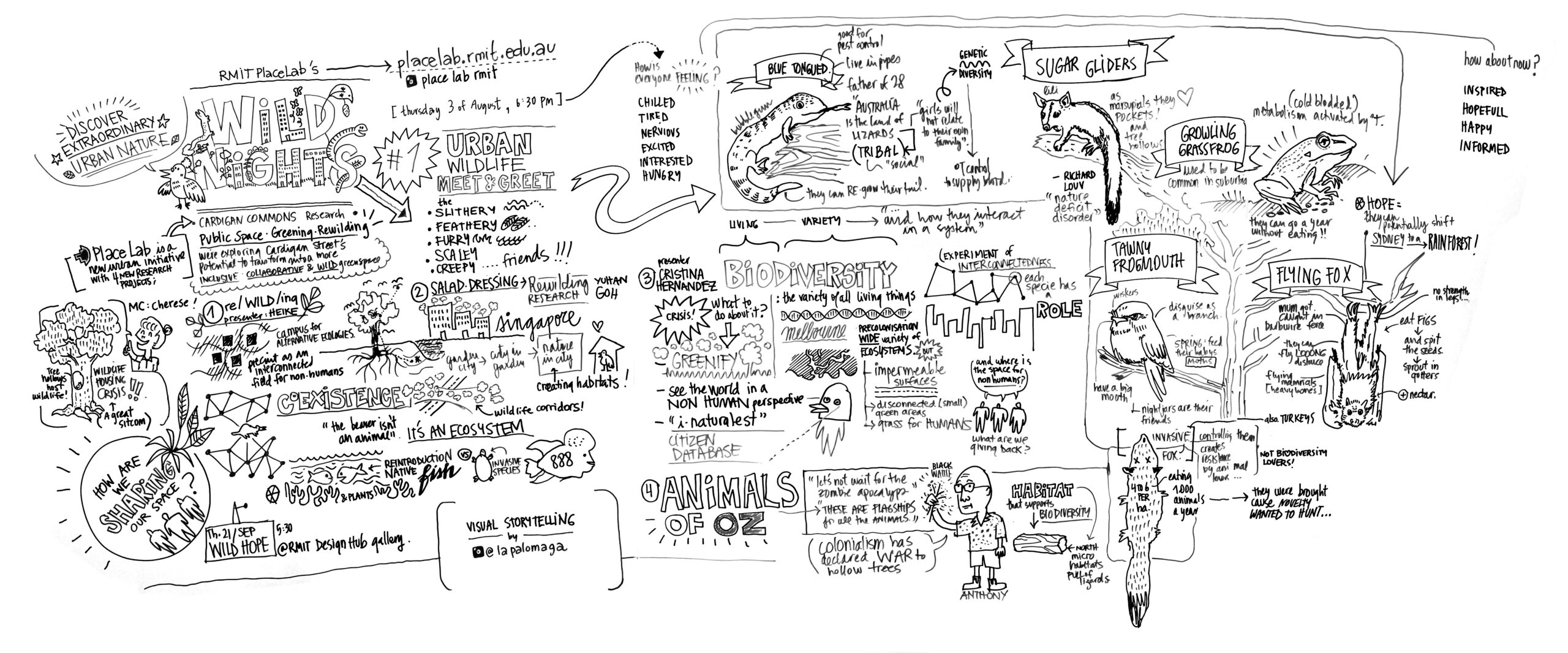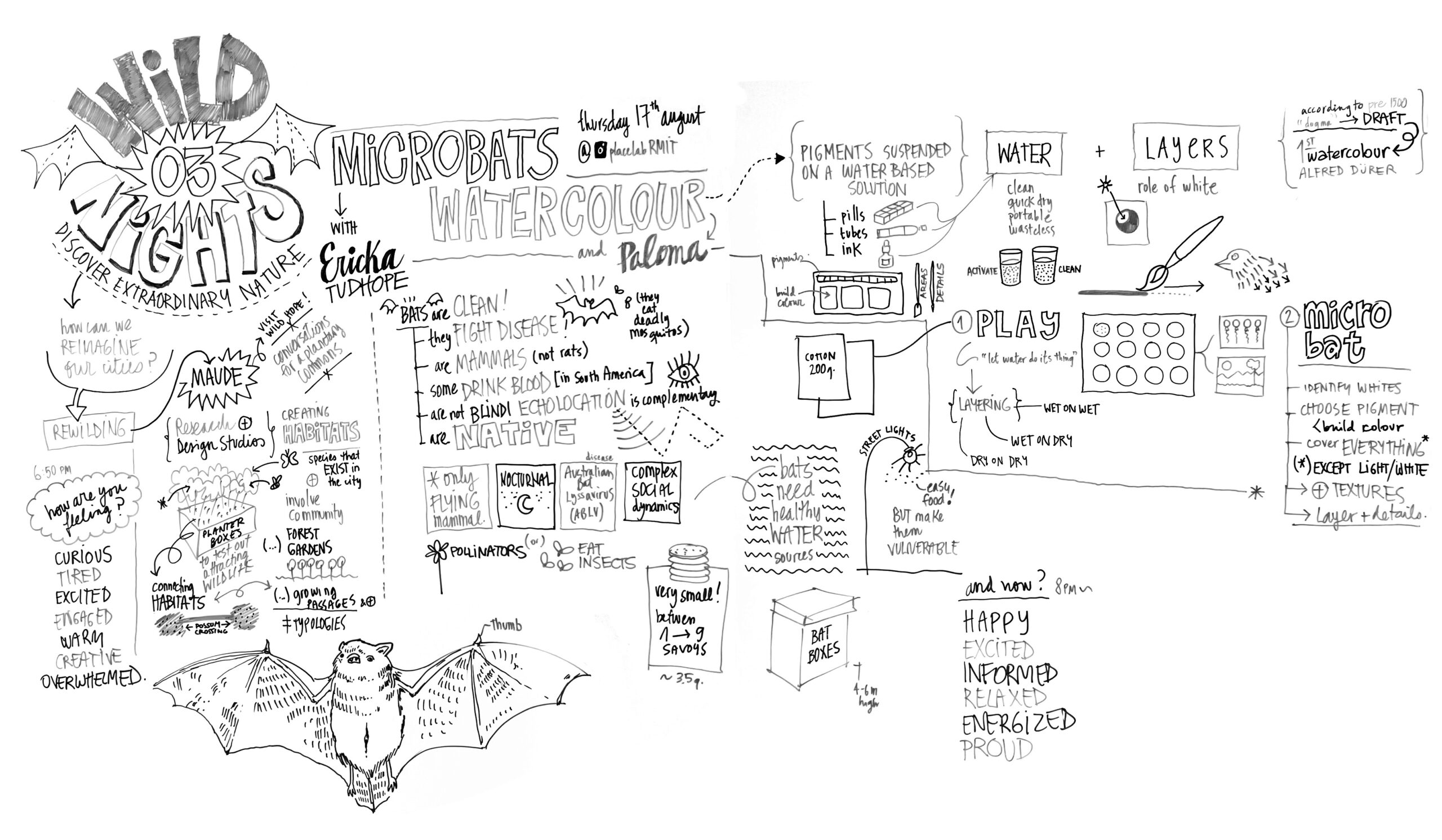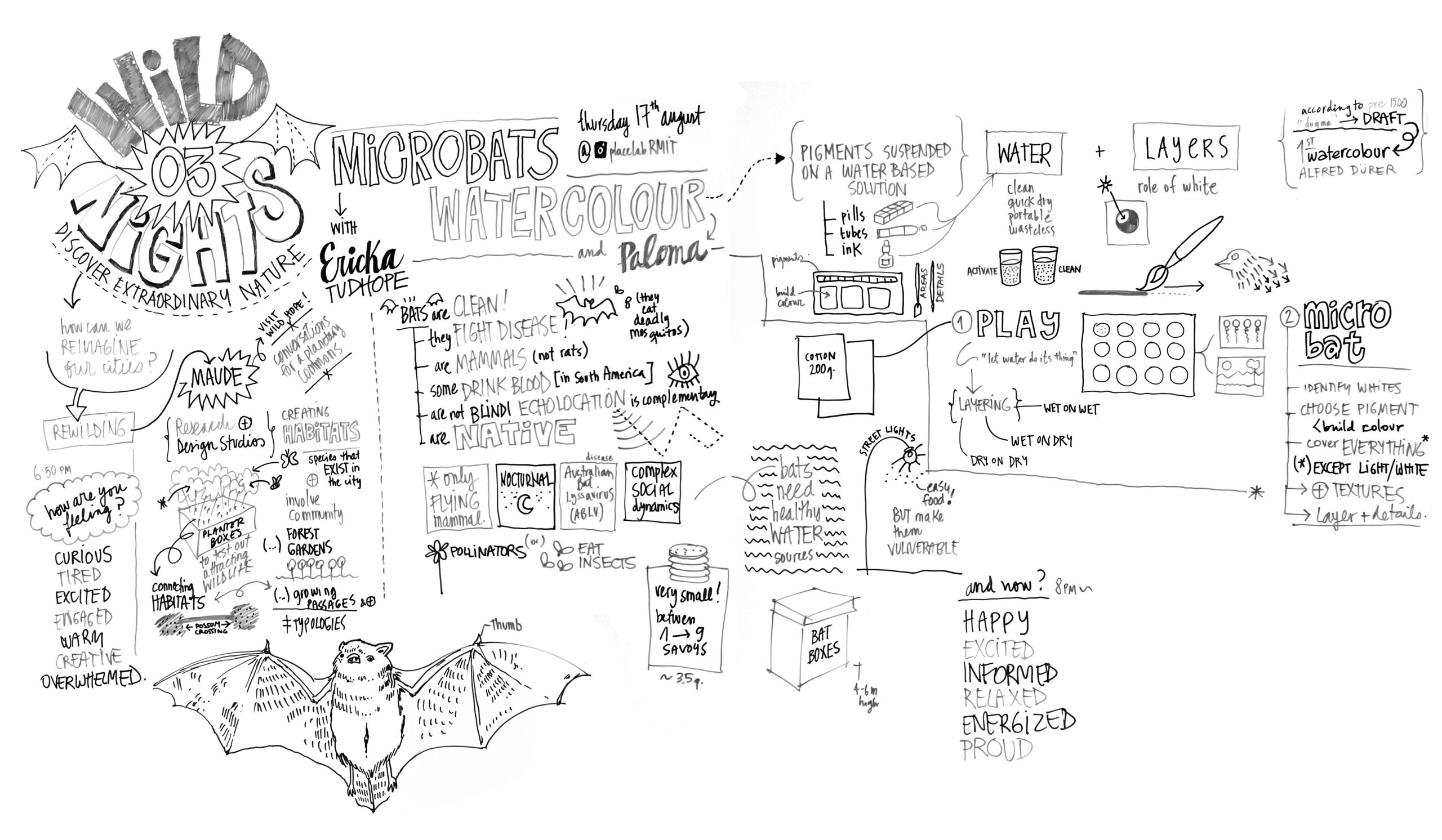Following on from our earlier post ‘Wild Nights Interactive Nature Events: Recap‘, we’ll now take you through each Cardigan Commons ‘Wild Nights’ events, outlining what we got up and who was involved.
Urban Wildlife Meet and Greet (Wild Nights #1)
Our first ‘Wild Night’ focused on urban wildlife. We heard from Cristina Hernandez, a PhD Candidate at RMIT, about the biodiversity crisis happening here in Melbourne, and worldwide and how we can help by understanding and nurturing the nature around us. We also learned from Yu Han Goh, the Director of Design at landscape architecture studio – ‘Salad Dressing’, and Heike Rahmann, a Senior Lecturer in landscape architecture at RMIT, about how people in Singapore are learning to live alongside monkeys, snakes and otters.
And we got to meet some animals! Wildlife educators from Animals of Oz introduced us to an energetic sugar glider, a calm and serene growling grass frog, a lazy blue tongue lizard, a curious grey-headed flying fox, and a sleepy tawny frogmouth. We were entranced by their eyes looking at us, as we looked back at them. At the very end, a few lucky people got to hold the huntsman spider, with her feathery feet resting gently on their hands.
Why a wildlife experience?
A study based in Singapore (Ngo, et al., 2022) found that direct experiences with wildlife (as opposed to in books or documentaries) influenced a more positive attitudes towards wildlife and willingness to coexist with them. This was even true for less desirable species such as bees and crows.
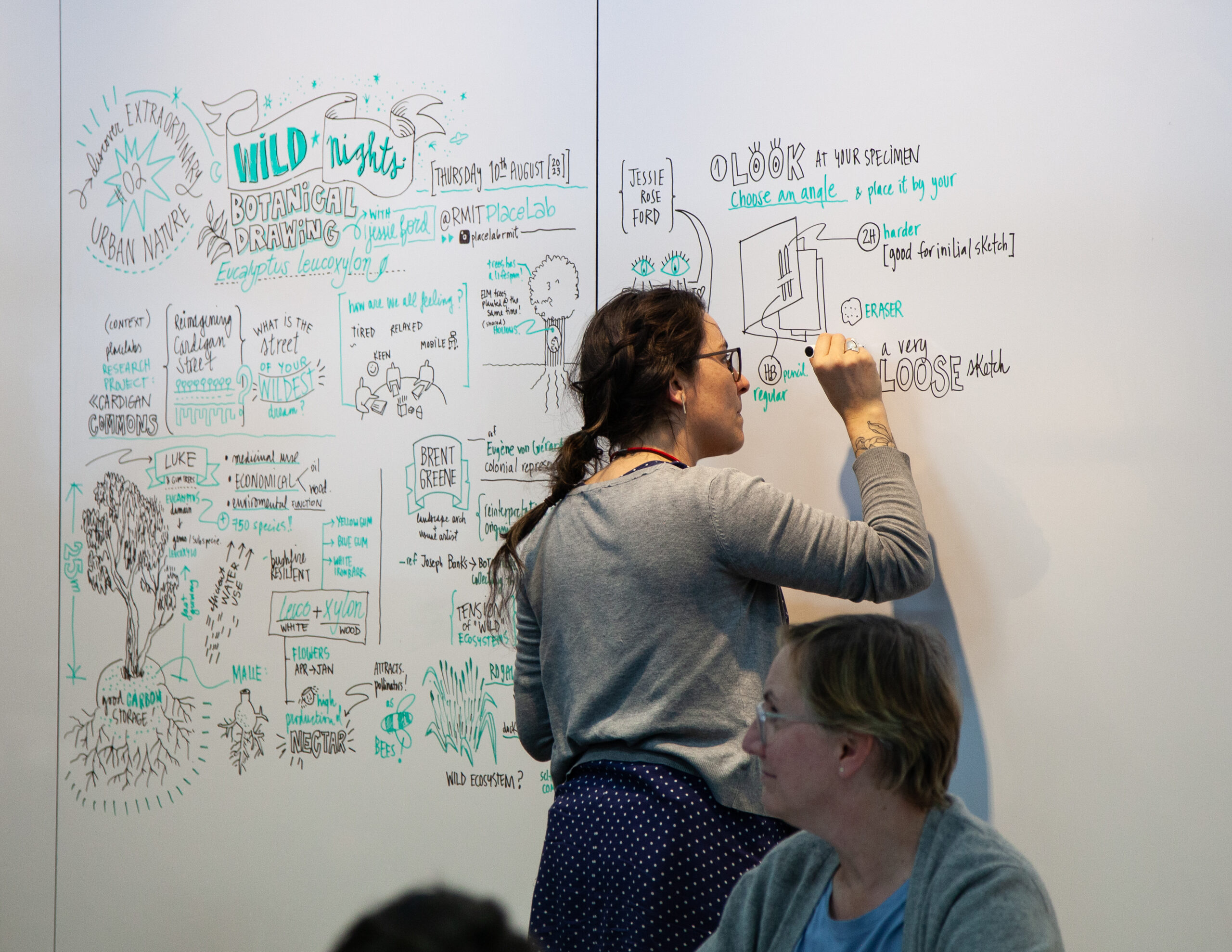
PlaceLab-er Paloma Bugedo illustrating the Wild Life experience. Photo by Emily Brigid Short.
Botanical Illustration Workshop (Wild Nights #2)
Eucalypts were the star of the show for our second Wild Night. We heard from Brent Greene, a Senior Lecturer from RMITâs School of Architecture and Urban Design, about drawing natural landscapes, including the nuances of how we define what is “natural”. And, we had an introduction to our subject, the Yellow Gum (Eucalyptus leucxylon), from our resident PlaceLab-er and gum tree expert, Luke Gebert.
Jessie Ford, a local botanical artist, led the hands-on workshop. She taught us that looking closely (and for a long time) at the specimen you are drawing is the key to understanding it and creating your representation of it. We learned how to apply light and shade, to sketch what we saw – not what we think we saw, and to use different pencil movements for different effects.
Why botanical illustration?
We wanted to create an event to combat “Plant blindness”. This is where humans are less likely to notice plants in their environment, seeing them as just background noise. This is partly because plants don’t have faces, so our brains ignore them. This ignoring of plants has broader implications, creating a disconnect from the natural world, less knowledge, and less appreciation for these important organisms.
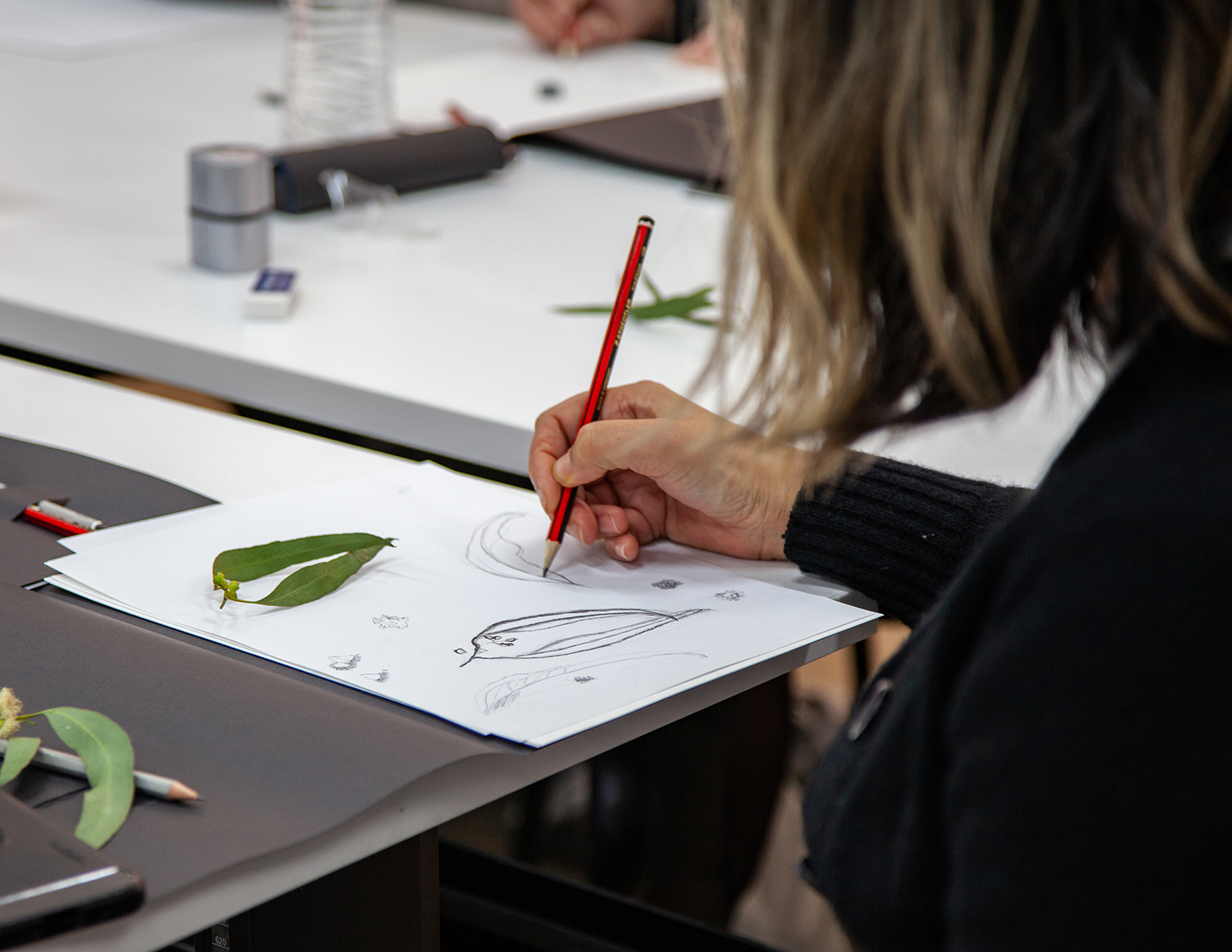
Jessie Ford working on her Botanical Illustrations. Photo by Emily Brigid Short.
Microbat Watercolour Workshop (Wild Nights #3)
Have you ever heard of Microbats? Not everyone has. They are tiny bats (weighing 3 to 150 grams. Or between 1 and 9 Savoy crackers) that live all around us — we have 21 species in Victoria alone. You’ve probably seen them flying at night out of the corner of your eye, they’re very fast. This event began with a talk about designing spaces for habitats by RMIT landscape architect Maud Cassaignau,. From planter boxes to forest gardens, and how the connections habitat spaces allow wildlife to get around.
Also speaking, was wildlife carer Ericka Tudhope from Microbats of Melbourne. She busted many bat myths, and we learned that bats are very clean, that some bats do drink blood, but bats aren’t blind and in fact can see quite well! Many microbats are important pollinators, as well as voracious insect eaters that keep our city’s bugs in check. Importantly, we learned that although bats can carry disease, like any animal, we can only get sick from them if we touch them.
Our resident PlaceLab-er, Paloma Bugedo, then took us through a crash-course in watercolour painting. We learned how to layer, and leave space for lighter shades. We played with the liveliness of water and built up colours to depict the more natural tones of the tiny bats we were representing (or chose to keep things colourful!).
Why microbats?
Although we have so many microbat species living alongside us in the city, most people don’t know about them. That, and people don’t usually like bats. They are often associated with disease and fear. But thereâs some evidence that greater understanding of bat biology can increase positive attitudes towards bats (Prokop et al., 2009), which is important to ensure they are given the space they need to help our urban ecosystems function.
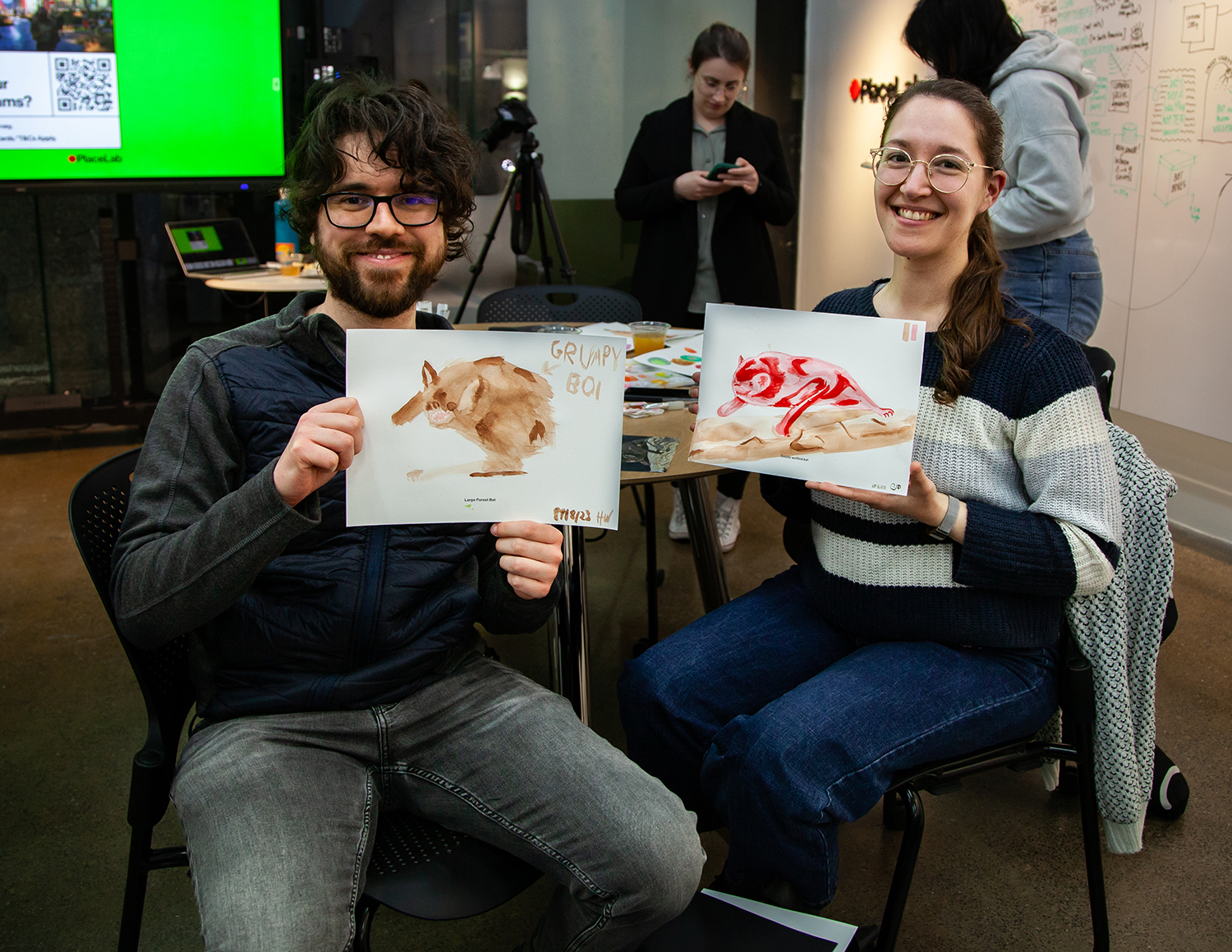
Participants showing their microbat watercolour paintings. Photo by Emily Brigid Short.
What’s next?
For these events we collected data on how they might have impacted mood and perceptions of urban nature.
Stay tuned to find out the impact of the Cardigan Commons Research Project’s ‘Wild Nights’ on the relationship between people and the more-than-human world.
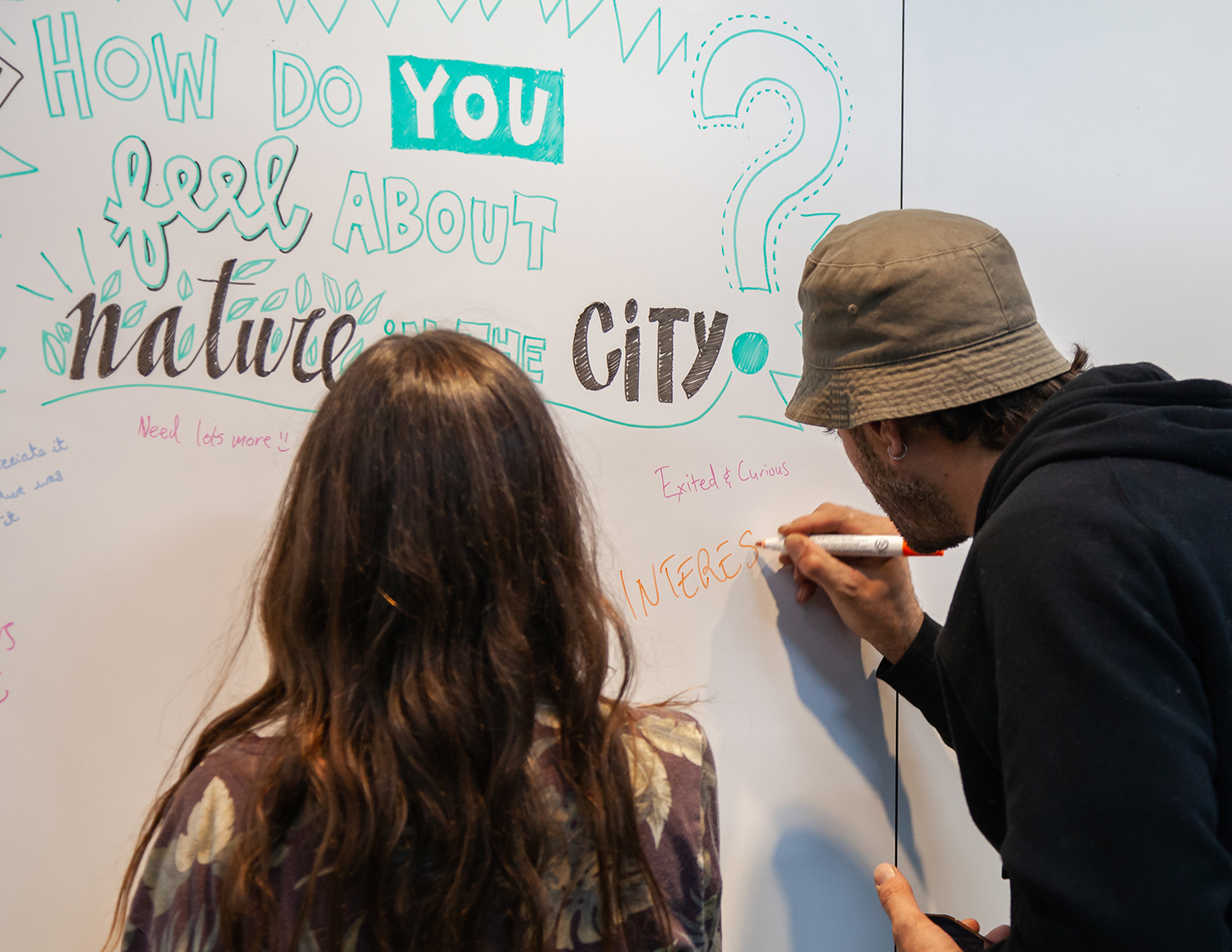
Participants contributing their thoughts to on the relationship between people and the more-than-human world. Photo by Emily Brigid Short.
Moments and information from the evening were captured in an image created by Paloma Bugedo (PlaceLab-er and visual storyteller) to document the evening in an engaging and succinct format.Â
